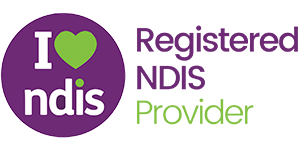What is a Yellow Card? Do I need it to work within the NDIS? Is the Yellow Card specific to Queensland? If you have these questions, you’re not alone. Let’s break it down.
Part 1: What is a Yellow Card for Disability?
Historical Context – Yellow Card System
Queensland used the Yellow Card System to screen workers and volunteers in the disability sector. Workers needed to apply for a Yellow Card in order to work with people with disabilities. The Yellow card is also known as Yellow Card NDIS, Disability Yellow Card, Yellow Card QLD or NDIS card.
The Yellow Card was managed by the Department of Child Safety, Seniors and Disability Services. The system helped build trust in the disability sector by making sure workers and volunteers passed background checks. It showed if they were eligible for disability-related jobs and had the right clearances, making it a key tool for accountability.
As of 1st February 2021, Queensland transitioned from the Yellow Card system to the NDIS Worker Screening Check. This shift standardised worker screening processes across Australia, instead of each state having their own system.
This means if you are looking to apply for a yellow card or a yellow card renewal, you now need to apply for the NDIS Worker Screening Check instead.
The Yellow Card was a state-run system under the Disability Services Act 2006.
Part 2: The NDIS Worker Screening Check in Queensland
The National Disability Insurance Scheme Worker Screening Check is a national process that evaluates whether a person is suitable to work with individuals with disabilities. It replaces the Yellow Card and aligns with the NDIS Quality and Safeguards Commission’s standards (link opens in new window). This check keeps those vulnerable safe by preventing people with a history of inappropriate behaviour from working in the sector. It includes detailed reviews of criminal history and other important records.
Workers engaged by a NDIS registered provider (such as EnableU) must undergo a NDIS Worker Screening Check. Unregistered providers and self-managed NDIS participants can also request workers to provide their worker screening check, while this is not mandatory.
Transitioning from Yellow Card to Worker Screening Check
Workers and volunteers with a valid Yellow Card or exemption can keep using it until it expires or is cancelled. New workers must apply for the NDIS Worker Screening Check to meet the updated compliance requirements.
If you are not working within the NDIS but will work or volunteer with people with disabilities in Queensland, you must apply for a state-level Disability Worker Screening Check (DWS) instead of the NDIS Worker Screening Check. This state-level check ensures that individuals working in disability support roles outside the NDIS framework are also appropriately screened to safeguard vulnerable individuals.
Note: You are required to have a valid clearance under the ‘no card, no start’ policy in Queensland before you can begin working with people with disabilities.
Part 3: Application and Costs for the NDIS Worker Screening Check in Queensland
The application process for the NDIS Worker Screening Check is straightforward. Both employees and sole traders need to apply if working within the NDIS. Note: Your employer is responsible for determining if a NDIS worker screening check is required for the type of work you’ll be performing. Make sure to confirm this with your employer before applying.
Applications and eligibility assessments are done online through the Queensland Worker Screening website (link opens in new window).
Workers who provide both NDIS and disability supports (in Queensland only) must complete a NDIS worker screening application.
If you are working with a children in Queensland, a working with children check is also needed (also known as a blue card). Both checks can be applied for simultaneously with a single fee.
The fees below are accurate as of 1 July 2024 and are subject to change.
NDIS Worker Screening Clearance
| Type of clearance | Cost | Validity |
| NDIS worker screening only (paid work) | $147 | 5 years |
| NDIS worker screening and Blue Card (paid work) | $162 | 5 years |
| NDIS worker screening only (volunteer work) | No Fee | 5 years |
| NDIS worker screening and Blue Card (volunteer work) | No Fee | 5 years |
| NDIS worker screening (volunteer work) and Blue Card (paid work) | $15 | 5 years |
Queensland Disability Worker Screening Clearance (State check)
| Type of clearance | Cost | Validity |
| QLD disability worker screening only (paid work) | $103.40 | 3 years |
| QLD disability worker screening and Blue Card (paid work) | $118.40 | 3 years |
| QLD disability worker screening only (volunteer work) | No Fee | 3 years |
| QLD disability worker screening and Blue Card (volunteer work) | No Fee | 3 years |
| QLD worker screening (volunteer work) and Blue Card (paid work) | $15 | 3 years |
Part 4: Does the NDIS Worker Screening Check Apply in All States?
Yes, the NDIS Worker Check (NDISWC) is a national clearance, meaning it is valid across all states and territories in Australia. If you get a NDIS Worker Screening Check in Queensland and move to another state, like New South Wales, the clearance will still be valid.
Note: If you are working with a children with disability (anyone under the age of 18), the QLD state-specific Blue Card is not national. For example, New South Wales has its own state-specific check for Working with Children. Depending on your circumstances and state, we advise you to review each local state requirements.
Summary
The Yellow Card was Queensland’s safety check for disability workers. It’s now replaced by the nationwide NDIS Worker Screening Check.





